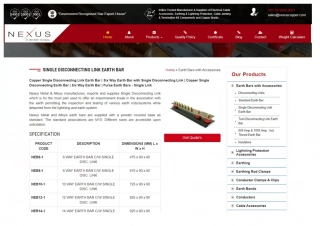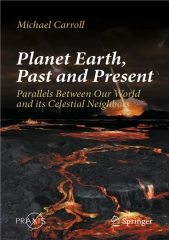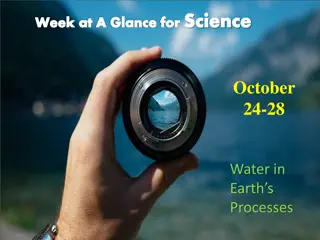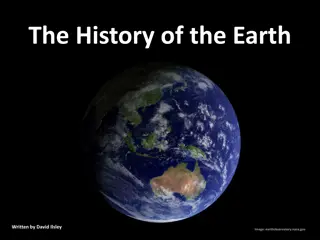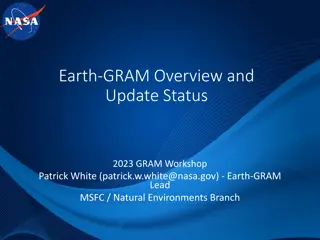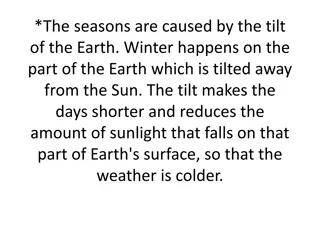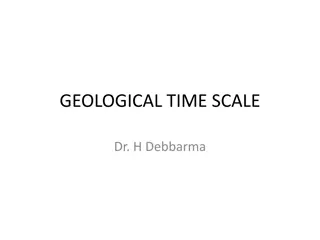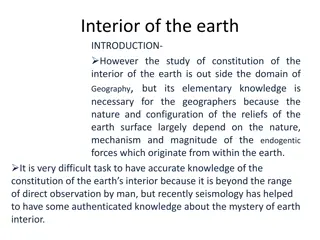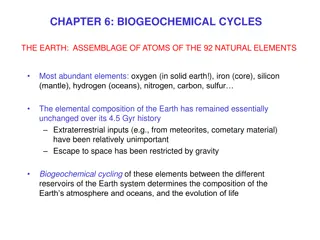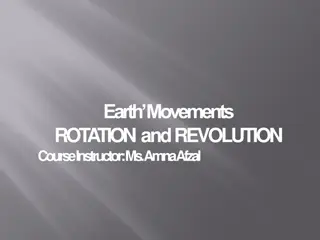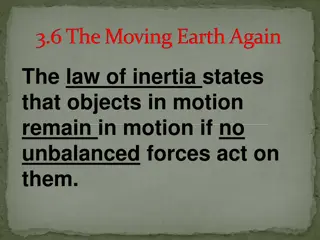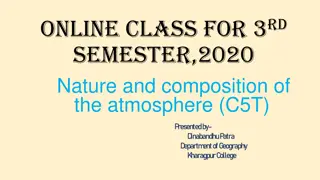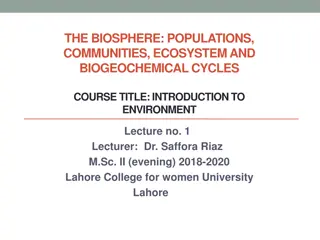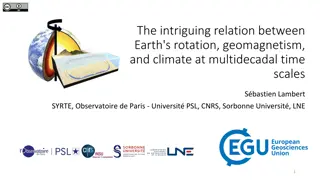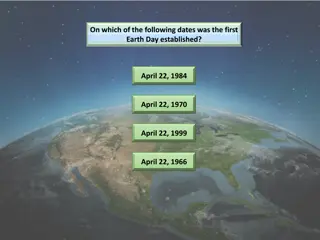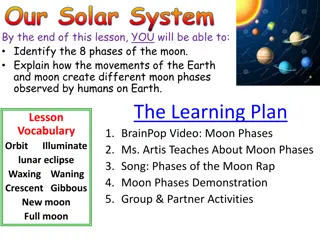How Our Decisions Impact Earth's Systems
In this unit, we explore the interconnectedness of Earth's systems through changes in atmospheric CO2 levels, sea level heights, and global temperatures. By understanding these relationships, we can identify the impact of human decisions on the planet's future and the need to address rising CO2 concentrations to prevent further environmental damage.
Download Presentation

Please find below an Image/Link to download the presentation.
The content on the website is provided AS IS for your information and personal use only. It may not be sold, licensed, or shared on other websites without obtaining consent from the author.If you encounter any issues during the download, it is possible that the publisher has removed the file from their server.
You are allowed to download the files provided on this website for personal or commercial use, subject to the condition that they are used lawfully. All files are the property of their respective owners.
The content on the website is provided AS IS for your information and personal use only. It may not be sold, licensed, or shared on other websites without obtaining consent from the author.
E N D
Presentation Transcript
Carbon: Transformations in Matter and Energy Environmental Literacy Project Michigan State University Human Energy Systems Unit Activity 6.2 How Our Decisions Affect Earth s Future 1
You are here 2
In this unit we have examined many large-scale data sets. Atmospheric CO2 Change in Sea Level Height 1.0 Global Temperature (meteorological stations) .8 Temperature Anomaly ( C) .6 .4 .2 0. .2 Annual Mean 5 year Running Mean .4 .6 1880 1900 1920 1940 1960 1980 2000 3
How are these changes in Earths systems related to each other? Atmospheric CO2 Change in Sea Level Height 1.0 Global Temperature (meteorological stations) .8 Temperature Anomaly ( C) .6 .4 .2 0. .2 Annual Mean 5 year Running Mean .4 .6 1880 1900 1920 1940 1960 1980 2000 4
Atmospheric CO2 If we could do something about this trend we could have an impact on these trends. 1.0 Change in Sea Level Height Global Temperature (meteorological stations) .8 Temperature Anomaly ( C) .6 .4 .2 0. .2 Annual Mean 5 year Running Mean .4 .6 1880 1900 1920 1940 1960 1980 2000 5
Using what you learned form the simple climate model in Activity 6.2, what would we need to do to stop or reverse the trend of increasing atmospheric CO2 concentrations? 6
What will happen to Earths systems if we dont reduce CO2 emissions? Biomass organic carbon Atmosphere Inorganic CO2 Before the industrial revolution, the carbon in the atmosphere pool maintained a balance between the biomass pool through photosynthesis and cellular respiration. for people and the planet? As carbon concentrations in the atmosphere continue to rise, so will the global temperatures. What are the results of increasing temperatures However, the biomass pool can only sequester a limited amount of carbon. Today, we are adding too much carbon to the atmosphere pool. This causes an imbalance. Fossil Fuels organic carbon If we continue to use fossil fuels at the rates we are using them now, it will be impossible for the planet to maintain the natural balance between the atmosphere and biomass pool. Soil organic carbon When we burn fossil fuels in cars and buildings, we move carbon from the fossil fuel pool to the atmosphere pool. 7
Review from Activity 6.2: How will our decisions about future CO2 emissions affect global temperature? What do you think the shaded area around each line represents? 8
What do the computer models predict about sea ice extent? The green line shows how much scientists predict the sea ice will decrease if we lower our emissions by a lot. Sea Ice Extent Predictions The red line shows how much scientists predict the sea ice will if we continue to increase CO2 emissions. 9
What do the computer models predict about sea level in the future? The red line is shows what will likely happen If CO2 emissions continue to increase (RCP8.5). The blue line shows what will likely happen if we drastically reduce CO2 emissions (RCP2.6). 10
Atmospheric CO2 The individual and collective (local, national, and global) decisions we make that affect CO2 emissions 1.0 Change in Sea Level Height Global Temperature (meteorological stations) .8 Temperature Anomaly ( C) .6 .4 .2 0. .2 Annual Mean 5 year Running Mean .4 .6 1880 1900 1920 1940 1960 1980 2000 will determine future global temperatures, amount of sea ice, and sea level. What impacts would increased global temperatures and sea level and decreased sea ice have on humans and other living things? 11
How our decisions affect Earths future: Questions for further study Climate change mitigation: What can we do to decrease CO2 emissions and the amount of CO2 already in the atmosphere? Effects of climate change: How will the effects of climate change affect humans and other living things? Climate models: How were the RCP scenarios developed and how do scientists use them? Climate feedbacks: How will changes to one Earth system affect others? Media literacy: Are the arguments about climate change presented in news stories based on reliable data? 12
Learning Tracking Tool Record the activity chunk name Global Implications and their role as Explainer. Discuss what you did during the activity chunk and record your ideas in the column, What Did We Do? Discuss with your classmates what you figured out will help you to answer the unit driving question. Record your ideas in the column What Did We Figure Out? Discuss questions you now have related to the unit driving question and record them in the column What Are We Asking Now?


